MBA Grad Quits Job To Grow Residue-Free Thai Guavas, Earns Over Rs 1 Crore
Uttarakhand MBA graduate Rajeev Bhaskar quit his job to pursue full-time farming, employing a lucrative method named residue-free farming to grow Thai guavas.
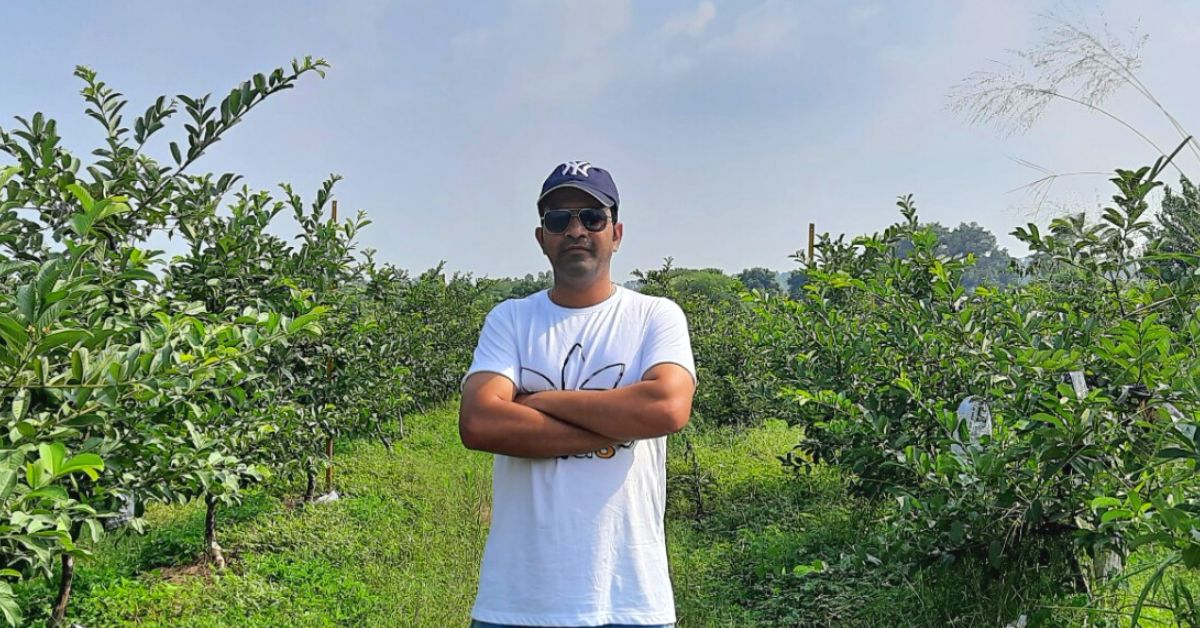
Nainital-born Rajeev Bhaskar never thought the experience he gained working at a seeds company in Raipur would one day help him become a successful farmer and entrepreneur.
As part of the sales and marketing team of the VNR Seeds company for almost four years, he had the opportunity to interact with several farmers from different parts of the country, he says. Through them, he learnt the scope of agriculture and was motivated to take up farming.
“Though I have a BSc in agriculture, I had no plans of taking up farming as a profession until I started working with VNR Seeds. I’d even done my MBA through distance education during that period. But as I dealt with the sale of seeds and saplings, I became more interested in agriculture, eventually wanting to try my hand at it,” he tells The Better India.
Along the way, he also learned the scope of the Thai variety of guava. “I also interacted with farmers who cultivated them and guided them,” he adds.
Taking his interest forward, Rajeev quit his job in 2017 to grow Thai guavas on five acres of land he took on the lease in Panchkula, Haryana. He does this via a method known as ‘residue-free’ farming.
Today, the 30-year-old agripreneur has expanded to 25 acres of land, on which he grows around 12,000 trees, earning him an average profit of around Rs 6 lakh per acre, he says.
Taking the leap
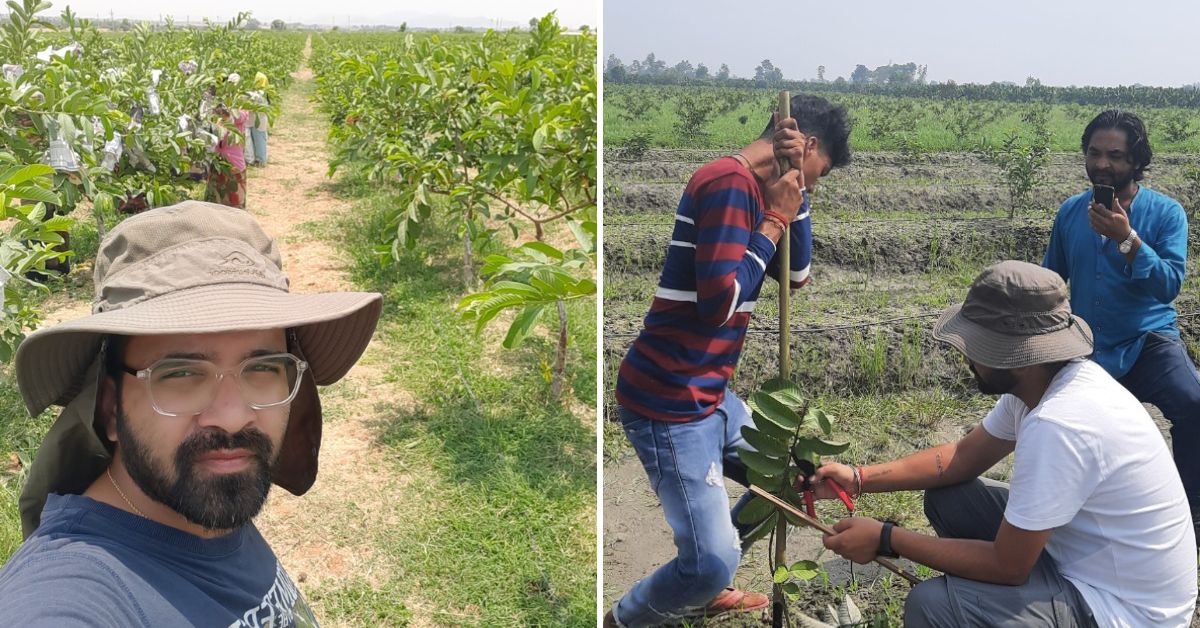
Rajeev says that while he had been wanting to take up farming for some time, he was unsure of quitting a stable job at the seeds company. But in 2017, a Thai guava farmer he had worked with offered him 5 acres of a guava orchard in Panchkula, as he was unable to take good care of it.
This turned out to be a turning point in Rajeev’s life — the same year, he quit his job and took on the role of a full-time farmer.
“The guava trees at his farm were three years old and bearing fruits. I took the land on lease and started nurturing the trees,” he says.
As the name suggests, Thai guava varieties are native to Thailand and have a high demand across India. These white fruits are larger than regular varieties, with an apple green skin. They’re only mildly sweet, with less fragrance.
“The major highlight of the fruit is that it has a long shelf life, of up to 12 days, when kept at room temperature of 25 degrees Celsius,” says Rajeev.
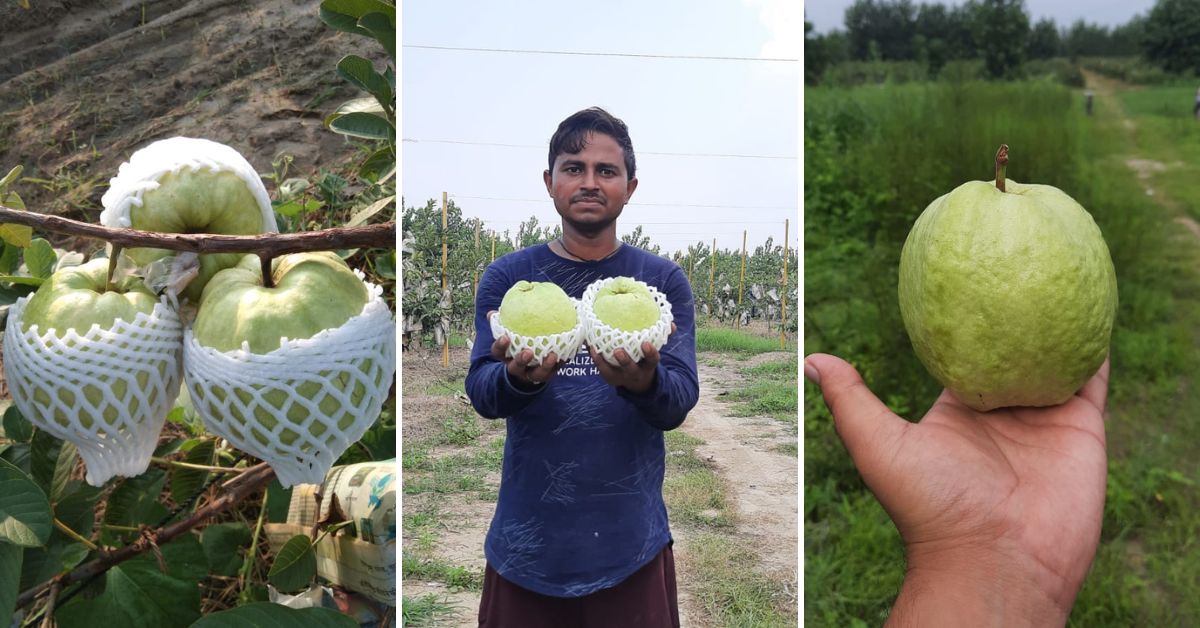
He says he adopted a residue-free method because he felt it was viable for large-scale horticultural farming.
“When I took over the farm, I realised the need for fertilisers as well as proper irrigation, which were essential for the growth of such fruit crops. I also wanted to make sure that my produce is safe and clean for consumption. Therefore, I adopted residue-free farming,” he explains.
What is residue-free farming?
Residue-free farming involves organically-derived biocides and biofertilisers to protect crops and help them grow. They sometimes involve the usage of chemicals, but in an optimum amount that does not harm human health.
“Organic farming works well when you are farming in an area or a surrounding where chemical farming is not practised much. But if the farms around you are using chemicals, then it would become difficult to manage an organic farm, which would be more prone to pest attack,” Rajeev explains. “Organic or natural farming at large-scale is an expensive affair and labour intensive. Besides, the final yield will also be less.”
According to a report in The Business Line, residue-free farming is economical and yields higher produce. Moreover, it leaves no chemical residue behind.
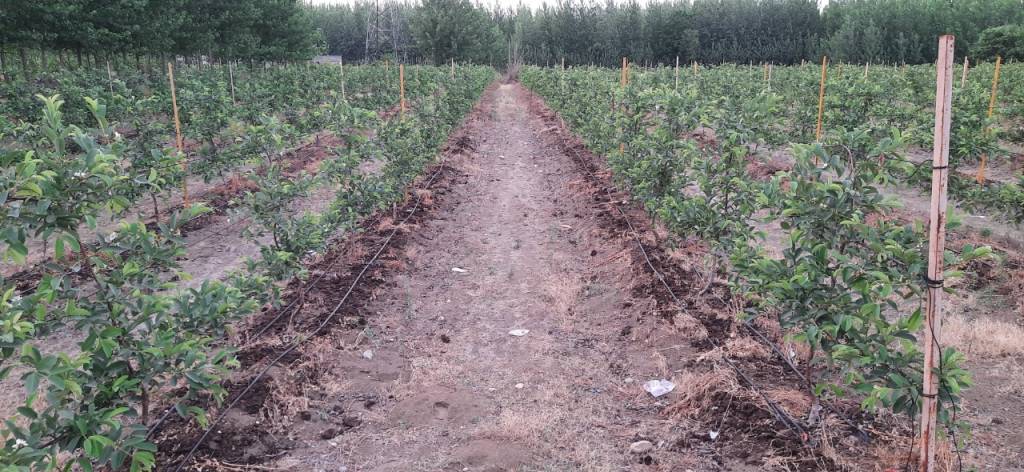
“Every pesticide has a specific pre-harvest interval (PHI), which is the gap between spraying and harvesting, or the minimum amount of time required for the pesticide residue to wear out before the crop can be harvested. I use only green-labelled pesticides that are less toxic and have less PHI, of around 3 to 5 days,” he elaborates, adding that he harvests his produce only after a gap of 15 days from the last application.
To understand more about residue-free farming, we spoke to Dr Amit Kumar Goswami, a horticultural scientist at the Indian Agricultural Research Institute in Delhi.
According to him, “There are different types of chemicals that have short-term residue and others with long-term residues. In residue-free farming, a very limited and safe amount of chemicals can be used that won’t leave residue on the outcome or on the produce. While using them, it is important to follow the pre-harvest interval (PHI) to ensure that the produce is free of any residue before consumption.”
“When it comes to natural farming, the basic components involve animals or livestock. But in their absence, it is difficult to make large-scale farming ventures economically viable. Therefore, certain dependency or minimal usage of such chemical components becomes necessary at some points,” he adds.
Rajeev says he uses water-soluble chemical fertilisers that help boost the yield at a very optimum level.
“We also use microbe culture in the soil so that it helps in better absorption of nutrients,” he says, adding that he uses drip irrigation for the timely application of water-soluble fertilisers as well as to minimise water wastage.
A successful harvest
Another essential farming practice he follows is the three-layer bagging.
“When the flowers turn to fruits, we immediately bag them to protect them from injuries and pest attacks. We first cover the fruit with a foam net, then an anti-fog polythene bag, and finally with a piece of newspaper. This three-layer packaging ensures uniform colour distribution and safe growth of the fruit till harvest,” he explains.
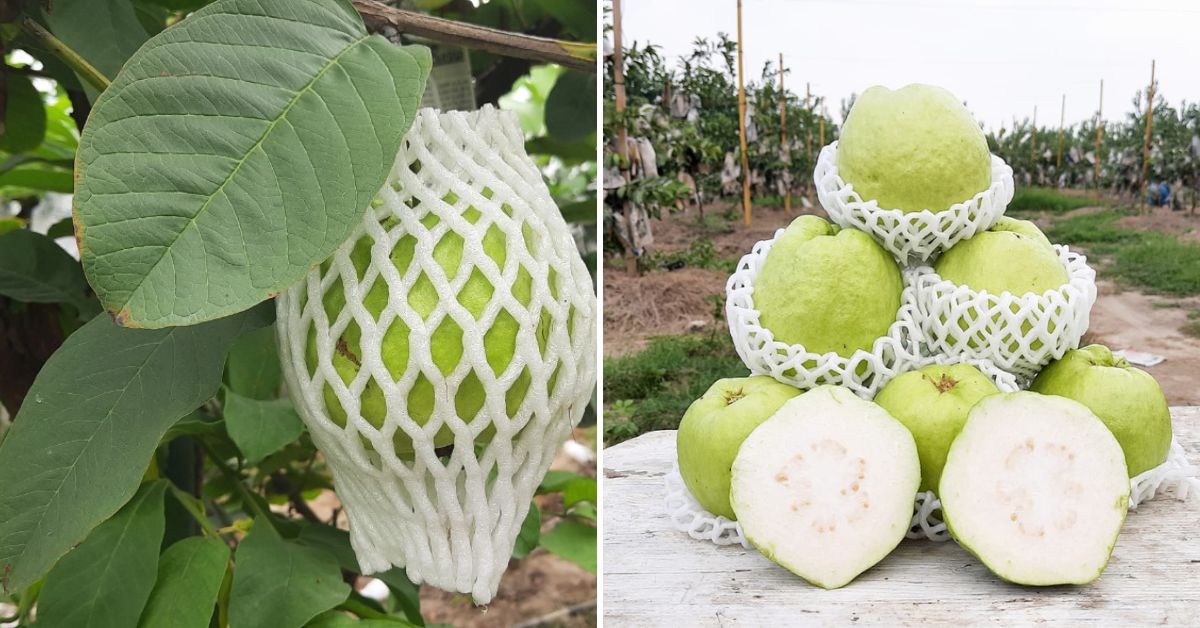
After taking over the farm in 2017, he says that the first yield was harvested and sold in October and November. “That year, I earned a gross revenue of Rs 20 lakh. It gave me the confidence to expand my venture. So I took another piece of land (15 acres) near the Mohali airport and attempted residue-free vegetable farming. But it didn’t work out as I expected as I couldn’t market my produce well,” he says.
Facing losses with vegetables, Rajeev decided to stick to Thai guava farming by roping in three more investors this time. Thus in 2019, they took 55 acres of land on lease in Rupnagar, Punjab and planted guava trees.
“We planted guava trees on 25 acres and I continued with the 5-acre plantation in Panchkula till 2021, when the owner decided to sell off the land. I also wanted to focus on the 25 acres, so I had to give up the first farm,” says Rajeev.
He says that guava trees start fruiting from the second to third year after planting, yielding around 10 kg per plant. The yield increases with time up to an average of 25 kg per plant.
“The average maximum potential of a single guava plant is 40 kg, which I wish to achieve in the coming years,” he adds.
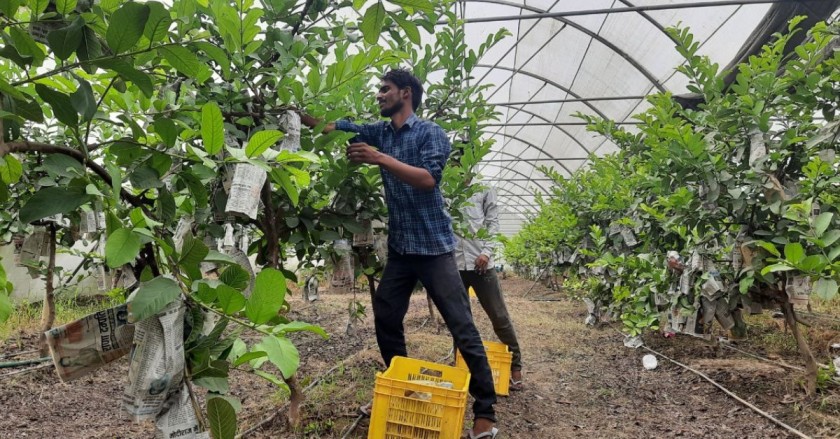
Guava plants are harvested twice a year — once during the rainy season and then during the winter. “But we harvest only during the rainy season in order to avoid competition from other varieties and sellers. We let the plants rest after that ,” he says.
“We sell all our produce to the Delhi APMC market in 10 kg boxes and get paid within one week. The rate per kg ranges between Rs 40 to Rs 100, based on season and quality,” he says. “Currently, I have around 14 farm workers and we earn an average of Rs 6 lakh per acre.”
According to Rajeev, Thai guava farming is a risky business as the profit could fluctuate.
“I might be getting a good yield right now, but it could be different next year. It could not be profitable all the time. But if we manage our farm very well and with some patience, we could eventually get a decent average profit every year,” he opines.
Edited by Divya Sethu
Source:
Prioritise residue-free farming over organic farming, by Thirukumaran Nagarajan; published by The Business Line on 15 May 2022.
This story made me
-
97
-
121
-
89
-
167
Tell Us More
We bring stories straight from the heart of India, to inspire millions and create a wave of impact. Our positive movement is growing bigger everyday, and we would love for you to join it.
Please contribute whatever you can, every little penny helps our team in bringing you more stories that support dreams and spread hope.



















